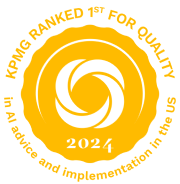Solved: 5 common enterprise performance challenges
From AI-enabled forecasts to robust data to faster closes, here’s how forward-looking companies are eliminating entrenched roadblocks.

Leading-edge technologies can transform your business and deliver powerful new capabilities.
The transformation initiatives required to actually realize those capabilities in these leading edge technologies can be difficult to get right. Missing the mark means allocating the company’s precious time and money… only to end up right back where you started. Where’s the disconnect?
The biggest barrier to sticking the landing on enterprise change efforts is not being set up for success from the outset: lacking a consistent, tightly connected approach to performance management across the organization leaves transformation initiatives feeling like one-off, chase-the-new-technology efforts that are doomed to fall short.
Success on these essential initiatives requires a thoughtful, coordinated, intelligent approach to business planning and execution. It’s what KPMG calls Intelligent Performance™: A holistic, enterprise-wide performance management vision—enabled by AI, data, and digital-first technology capabilities—that empowers the entire organization to move more quickly, deliver more value, and drive better business outcomes. This commitment to Intelligent Performance helps companies solve a wide range of challenges—from more efficient business planning and execution all the way through to delivering on those big-swing transformation projects.
Here’s a look at how companies operating from a solid foundation of Intelligent Performance have unlocked opportunities in five key areas, based on our recent research and on-the-groundwork with clients.
Challenge #1: Data

Before:
Poor data quality; lack of consistent availability and utilization; data silos and multiple instances of the same data across different teams; multiple data repositories that don’t connect well (or at all); old data and outdated KPIs; limited to no utilization of external data.
After:
An Intelligent Performance approach enables companies to tap the power of Big Data by ensuring tight alignment across the organization on a unified, clearly defined enterprise data model. As a best practice, companies start with “end-in-mind” design principles for their data systems that establish a single source of truth for the entire organization, eliminating data silos and inconsistent usage by different teams. This powerful data model is underpinned by tightly coordinated data management and governance across the organization to ensure data quality and availability. Data is regularly evaluated and updated, with old data and KPIs retired and new ones added to reflect business changes. And the addition of new data, including external data and signals, can improve forecasting accuracy and insights.
The Result:
A truly data-driven enterprise, with tightly integrated systems, strong data governance, and robust internal and external data—in fact, at least 80 percent of companies that operate with Intelligent Performance use external data in their decision making.
Challenge #2: Forecasting Speed, Accuracy, and Value
Before:
Forecast cycle times that take so long their assumptions become stale; inability to quickly run financial scenarios; excessive sandbagging and forecasts that regularly diverge from actuals; lack of sophisticated forecasting tools, such as AI-enabled applications; poorly defined business drivers; missed growth and net revenue opportunities.
After:
Intelligent Performance elevates forecasting through its emphasis on adding proven AI-enabled tools like predictive algorithms and scenario modeling that can quickly scan vast amounts of data and, with repetition, steadily improve forecast accuracy. And because the entire organization is operating with robust and tightly connected data, the company improves the speed and value of the related insights, helping it identify and pursue new opportunities in days instead of weeks. Urgent financial scenarios can be generated in minutes, for example, allowing leadership to rapidly evaluate options and move more quickly on critical business decisions.
The Result:
A business-led, technology-enabled Intelligent Performance best practice that cuts forecast turnaround times in half and improves accuracy by 60 percent or more.
Challenge #3: Closing and Reporting Cycles
What if you could trust your data completely?
Before:
Highly manual data collection and input tasks; outmoded review processes that rely on emails and extended versioning; closing cycles that require multiple weeks (or more) to finalize; elongated cycles to produce the information and analytics the business needs to optimize operations; more time on processes, less time on insights.
After:
Process automation is one of the hallmarks of an Intelligent Performance organization. Here again, already-proven AI-driven automations can streamline data extraction and validation and anomaly detection, freeing up teams to focus more time on generating insights from their reports—rather just the process of generating reports. And cloud-based collaborative reporting tools significantly shorten review cycles with automated workflows that cue users to review and comment on a single, shared document. Your in-box will thank you, too.
The Result:
70 percent-plus automation of reporting processes and 3X more time spent on analysis and decision-support.
Challenge #4: Disparate, Disconnected Systems
Before:
Legacy tech systems; multiple, redundant systems, such as ERPs and EPMs, across different units of the business; lack of full connectivity across all essential technologies; supply chain challenges and misaligned cost-price analytics; inconsistent product and customer segmentation data that creates a drag on identifying new market opportunities.
After:
Intelligent Performance means striving to be a fully connected enterprise that eliminates technology-driven silos. Real-world challenges like acquisitions and the need to support legacy systems may complicate that goal, of course. But leading companies are using cloud-based enterprise systems to develop a unified data model that makes critical data more available to the whole organization. This approach streamlines operations across the company by optimizing the supply chain, creating real-time pricing and demand views, tightly integrating customer data, and more.
The Result:
Connected technology enterprises can double an organization’s impact in areas like supply chain operations, e-commerce, and workforce productivity. We’ve seen companies with well-connected enterprises improve plant operations by 5X, and more than 80 percent of leading companies have adopted cloud-based systems.
Challenge #5: Talent

Before:
Gaps in essential go-forward capabilities; misalignment of skills and capabilities; no consistent plan on upskilling or training on new tools and processes; lack of attention to change management overall.
After:
Intelligent Performance-driven organizations understand that getting their teams involved and collaborating from the start is essential. This often means a strategic rethink of the company’s HR approach—recruiting new skillsets, retraining and reallocating resources, and establishing proven ways to make changes stick through innovations like cross-functional centers of excellence (COEs).
The Result:
In our research, 75 percent of companies that operate with Intelligent Performance enable organizational agility with specialized COEs, and two-thirds have robust talent acquisition and management strategies.
How KPMG can help
As you may have noticed, there’s a connective tissue running through all the opportunities above: Good data hygiene drives more intelligent forecasting, powered by tightly connected technology systems that reduce reporting timelines and free up staff to do more for the business. And the best KPI of all: Organizations that operate with Intelligent Performance generate 10 percent more overall revenue growth by executing on all of the opportunities above. Please let us know if we can help your company chart its path to Intelligent Performance.
Explore more

GenAI enabled finance
Leading CFOs and finance functions leverage GenAI to improve the speed and quality of business intelligence and drive better business outcomes.

Next generation of service delivery models
Explore how GenAI is expected to revolutionize service delivery models and drive business value.

Supercharge your Finance workforce with GenAI
Create a roadmap for success

2023 KPMG Generative AI Survey
An exclusive KPMG survey shows how top leaders are approaching Generative AI

6 superpowers of the AI-enabled finance team
Here’s how leading-edge finance teams are using AI to deliver results today—and paving the way for the exciting new AI-driven opportunities ahead.
Subscribe to CFO Real Insights
Discover KPMG CFO Real Insights, designed to help improve business performance across the enterprise and in your finance organization.
Meet our team



KPMG ranks #1 for quality AI advice and implementation in the US
According to senior buyers of consulting services who participated in the Source study, Perceptions of Consulting in the US in 2024, KPMG ranked No. 1 for quality in AI advice and implementation services.